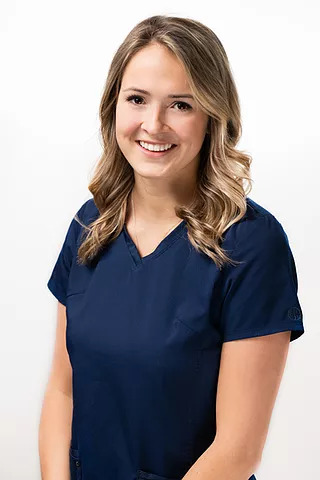We recently sat down with Dr. Brittany Yelle, a PROSE Provider at Precision Cornea Centre in Ottawa, Canada, to learn about her experience using PROSE treatment and scleral lenses, and how she chooses between these modalities when working with patients. Prefer video? You can watch Dr. Yelle answer our questions here.
What led you to become a PROSE (Prosthetic Replacement of the Ocular Surface Ecosystem) provider?
What led me to become a PROSE Provider was having really complex cases sent over by my cornea colleagues and not being able to get adequate fittings. I wouldn’t put up with telling them that there was nothing else that could be done. So, I decided to become part of the PROSE family so that I can help those patients out.
How has fitting specialty lenses changed your perspective on the needs of your patients?
Fitting PROSE or specialty contact lenses has definitely changed my perspective in the sense that I we’d put up with things beforehand and say that’s all that could be done. And now, we’ve got so many other options for patients. So, if patients are motivated, I tell them that we should never give up and keep going.
When do you use PROSE treatment vs. a traditional scleral lens?
I consider PROSE treatment to be like a tailored suit. Some patients prefer having their suits tailored right off the bat, and some patients have no choice but to get a tailored suit. And so, depending on the case, I’ll often give them the option [between PROSE and scleral lenses]. If the patient is very particular and wants it to be very personalized right off the get-go, we’ll start with PROSE. Then there are some patients that just don’t have a choice because of what I need to go over.
When do you use PROSE right from the start?
An eye that would need PROSE right off the bat are typically ones with a lot of elevations on the conjunctiva, so things like glaucoma surgery, areas of elevation like pinguecula and pterygium, or patients who are struggling with graphs that are failing and needing proper oxygen permeability. Even with the best materials sometimes you can’t get it. So having to add in fenestration and being able to adapt every edge of the lens is definitely something I can only do with PROSE.
How far do patients come for PROSE treatment?
For PROSE treatment we’re the only center that offers it for all provinces. We get patients all the way from the east coast and all the way out west as well. Some patients travel from quite far away, but most patients I would say are within a 12-hour drive of us.
What is your favorite part of your job?
The favorite part of my job is definitely hearing patients tell me they are able to do things that they weren’t able to do before they came in: To get a driver’s license, being able to apply for certain jobs, people being able to become pilots when they weren’t eligible beforehand.
Is there a patient story that has had a particular impact on you?
I have a patient that was from the northern part of Ontario where they don’t have access to a lot of care up there and was told that he had too advanced of keratoconus and that here was nothing to do for his vision; and even if he got corneal transplants, he probably wouldn’t see any better. He was on disability because he was legally blind in both eyes. And he was sent down to our clinic basically just to get a confirmed diagnosis. What ended up happening is we fit him on the spot with some of our trial lenses just to help him out, and now he is 20/20 in both eyes, and he is living his best life.
What do you look forward to achieving as a PROSE provider?
As a PROSE Provider something that I’d like to achieve is maybe being able to fundraise a little bit better to help patients have access to their devices. I have a lot of patients that, unfortunately, if insurance doesn’t cover or if they don’t have the funds, it’s just off the table, and I’d love to be able to offer these lenses to those patients without money being an issue.
